20 Ducks with Black Feet
Have you spotted a duck with black feet and are trying to identify its species? You’re in the right place. While foot color alone may not be enough to confirm an identification, it can offer a useful clue to narrow down your options. Several duck species have black feet, and recognizing this feature can help eliminate others from your search. Below is a quick list of ducks with black feet, along with helpful identification tips to guide you toward the right match.
- 1. Canvasback
- 2. Harlequin Duck
- 3. Ring-necked Duck
- 4. Tufted Duck
- 5. Greater Scaup
- 6. Lesser Scaup
- 7. Steller’s Eider
- 8. Black Scoter
- 9. Paradise Shelduck
- 10. Ruddy Shelduck
- 11. Northern Pintail
- 12. American Wigeon
- 13. Cayuga Duck
- 14. Blue Duck
- 15. Black East Indian Duck
- 16. Pomeranian Duck
- 17. Long-tailed Duck
- 18. Hartlaub’s Duck
- 19. Maned Duck
- 20. Muscovy Duck
1. Canvasback
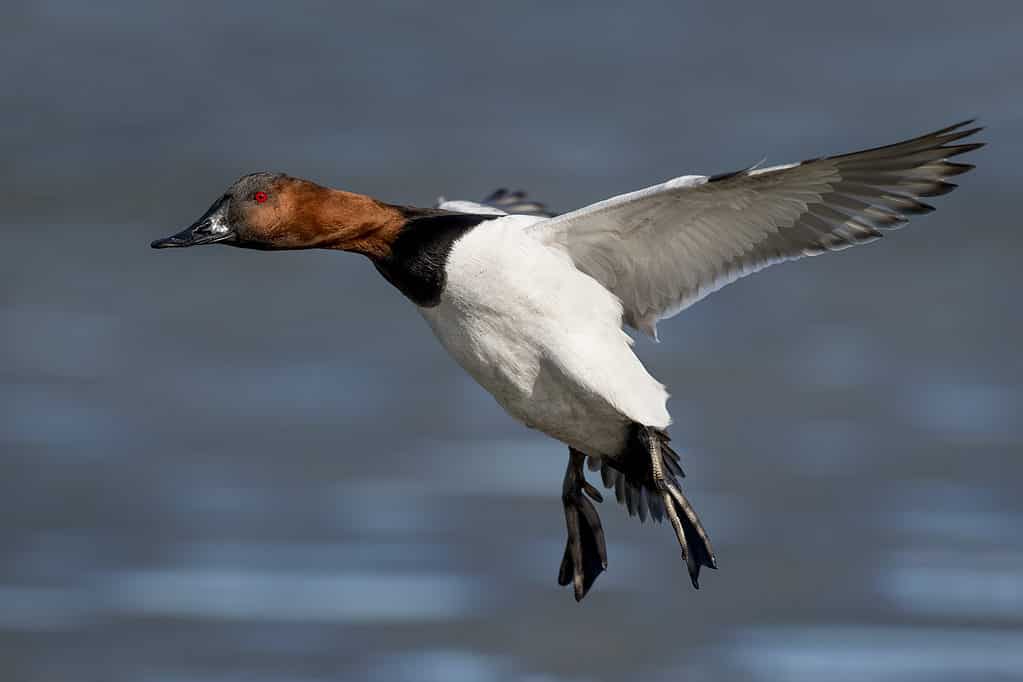
Often called the “aristocrat of ducks” for its elegant profile and striking appearance, the Canvasback commands attention wherever it swims, distinguished by its sleek black feet and long, gracefully sloping head. This bird is one of the biggest diving ducks in North America. The male shows off a chestnut-red head, black chest, and a white back that looks like woven fabric — which is how it got its name. The female is softer in color, with shades of brown and gray, but both have the same dark, bluish-black feet. Canvasbacks are often seen gliding gracefully across lakes and ponds, diving deep to find plants and seeds underwater.
2. Harlequin Duck
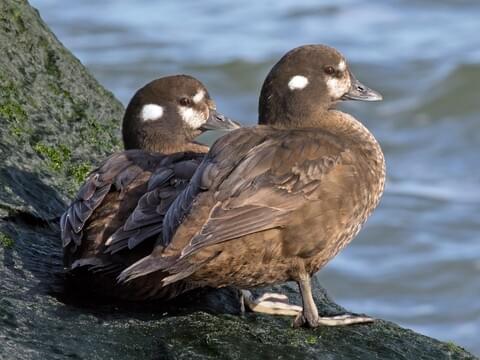
The Harlequin Duck is a small, striking bird that stands out with its bright markings and — yes — black feet. Males wear a bold mix of slate blue, chestnut, and white spots, looking almost like they’ve stepped out of a painting. Females are quieter in color, wearing brownish-gray feathers with white patches on the face. These ducks love fast-moving streams and rocky coastlines, where their black feet help them grip slippery stones as they feed in rushing water. They’re not just pretty — they’re strong swimmers too!
3. Ring-necked Duck
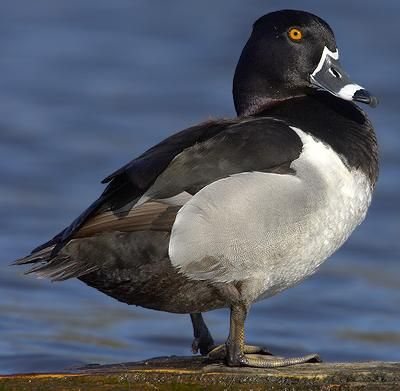
This duck’s name might trick you — it’s called the Ring-necked Duck, but the ring around its neck is hard to see! What’s easier to notice are its sharp black-and-white patterns and its dark feet. The male has a glossy black head and chest, a white belly, and two neat white rings around the bill. The female wears softer brown tones but shares those blackish-gray feet. You can often spot them in calm lakes or ponds, diving for seeds and aquatic plants.
4. Tufted Duck
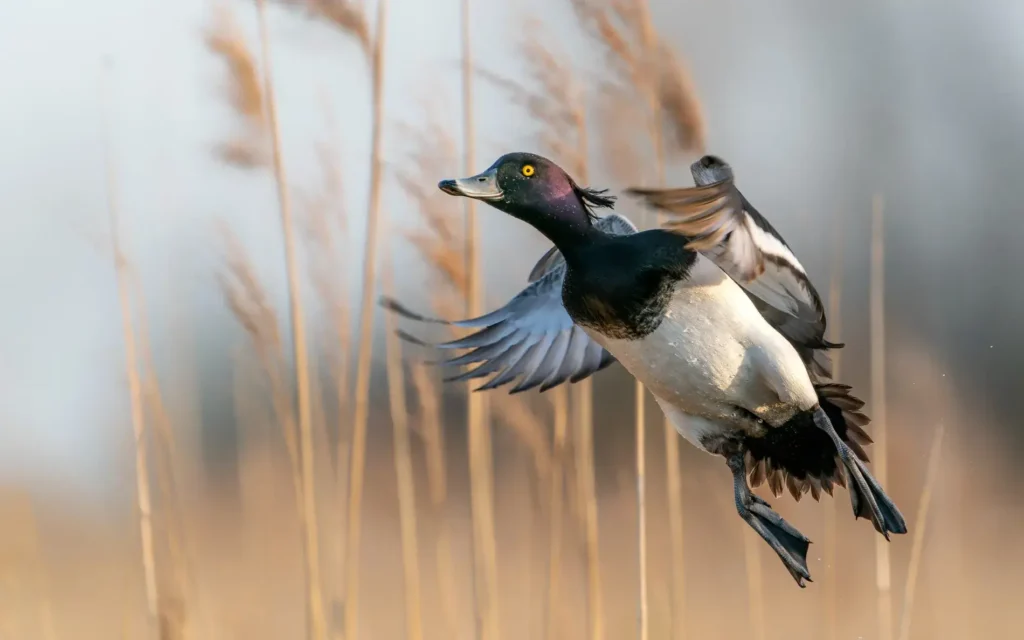
The Tufted Duck is easy to recognize once you spot that little tuft or “ponytail” on the back of its head. Males are mostly black with bright white sides and striking yellow eyes, while females are chocolate-brown with lighter sides. Both have dark, almost black feet that help them dive and paddle with ease. They’re often found in groups, diving under the water for food and popping back up like corks. If you see a small diving duck with a fancy tuft and black feet — that’s your Tufted Duck!
5. Greater Scaup
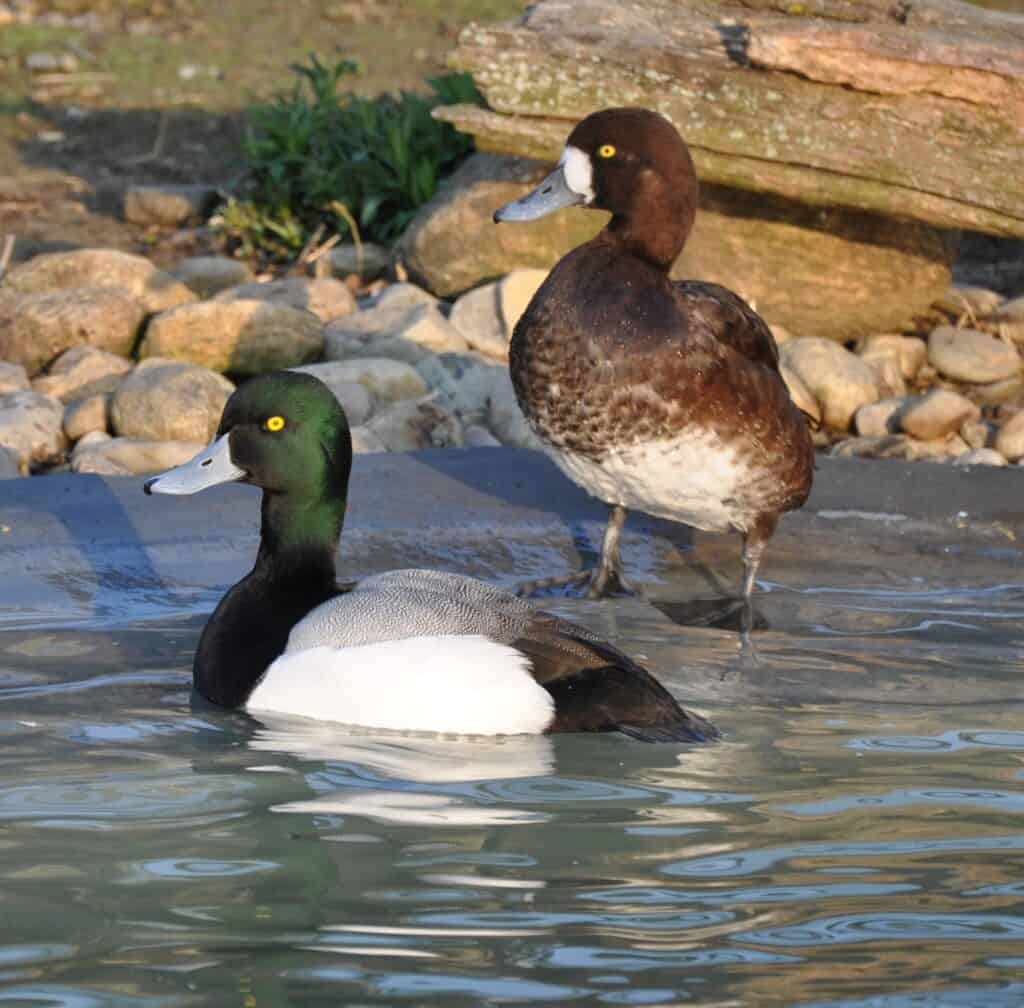
The Greater Scaup is a sturdy diving duck often seen floating in groups on large lakes or coastal bays. One of its key features is its dark, blackish feet — a helpful clue for identification. Males have a glossy green head, bright yellow eyes, and a bluish bill, while females are brown with a white patch at the base of the bill. Both have those dark feet that help them dive deep underwater to feed on clams, snails, and aquatic plants.
6. Lesser Scaup
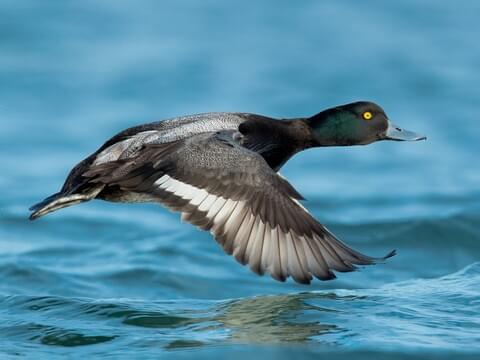
The Lesser Scaup looks very much like the Greater Scaup but is slightly smaller and has a purplish sheen on its head instead of green. Both species share dark, almost black feet, which they use to kick powerfully underwater while diving. Males wear black and white plumage with bright yellow eyes, and females are brown with a white face patch. They’re often found on lakes, ponds, and marshes, diving again and again in search of food.
7. Steller’s Eider
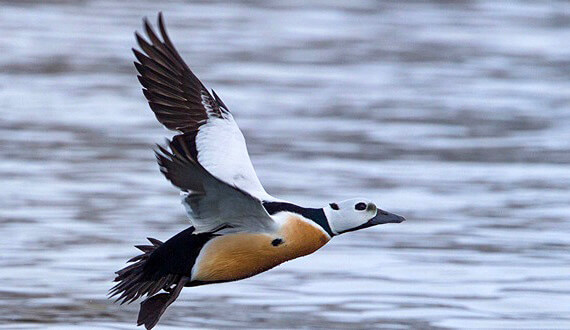
The Steller’s Eider is one of the most beautiful sea ducks, and yes — it also has black feet. Males in breeding season are easy to spot with their creamy white heads, blue backs, and bold black and chestnut markings. Females are brown and more camouflaged, but both have the same dark feet built for swimming in icy Arctic waters. These ducks spend much of their time near the coasts, diving for mollusks and crustaceans.
8. Black Scoter
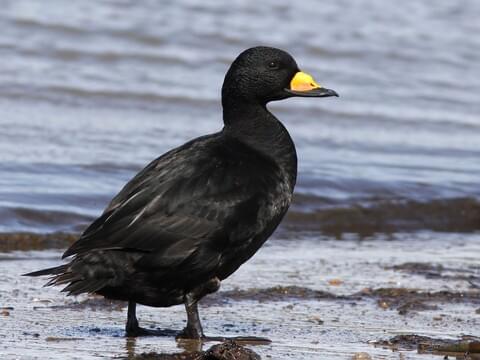
As the name suggests, the Black Scoter is mostly black — and so are its feet. The males are all dark with a distinctive orange knob on the bill, while females are brown with pale faces. Their black feet help them paddle through cold coastal waters where they dive for shellfish and insects. They’re tough sea ducks that can handle rough waves and chilly weather.
9. Paradise Shelduck
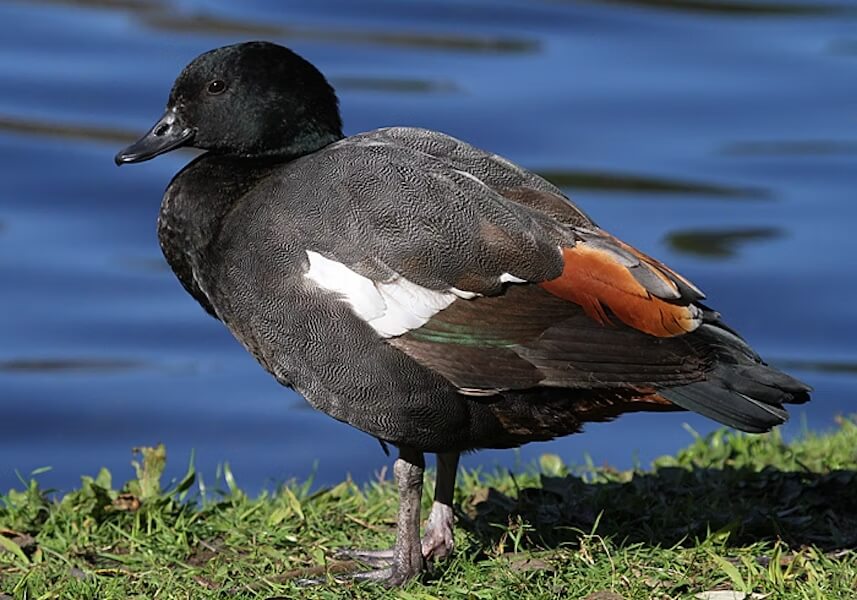
The Paradise Shelduck is a striking and large duck from New Zealand, known for its bold colors and black webbed feet. The male has a dark, blue-black head and neck, while the female stands out with a pure white head and rich chestnut body. Both have black legs and feet, perfect for swimming and walking across grassy wetlands. You’ll often see them in pairs — they mate for life and stay close together.
10. Ruddy Shelduck
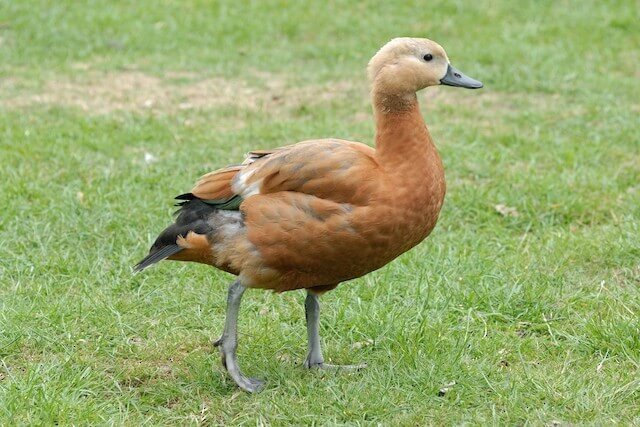
The Ruddy Shelduck is a large, brightly colored duck that’s easy to spot thanks to its glowing orange-brown body and creamy head. Both males and females have dark legs and black feet — a detail that’s useful when identifying them, especially when they’re resting near the water’s edge. Males show off a thin black collar around the neck, while females usually lack it and have a paler face. These ducks love open lakes and rivers and are often seen in pairs. When they take flight, their white wings flash brightly, contrasting beautifully with their dark feet below.
11. Northern Pintail
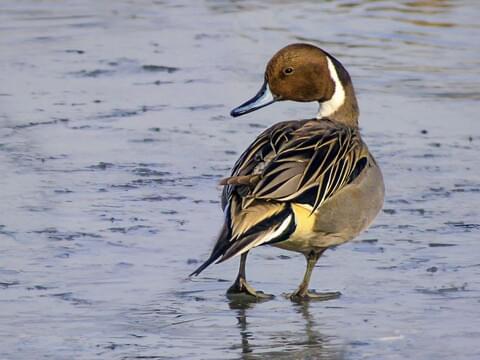
The Northern Pintail is a graceful, long-necked duck known for its elegant shape and pointed tail feathers. Males have a chocolate-brown head, a white stripe up the neck, and blue-grey legs and feet that appear almost dark in some lighting. Females are mottled brown with the same slender build and long greyish feet. Pintails walk well on land and swim effortlessly in shallow waters. Their sleek bodies and slightly forward-leaning swimming style make them easy to recognize — and those dark-toned feet are another good clue for birdwatchers watching them dabble or wade near the shore.
12. American Wigeon
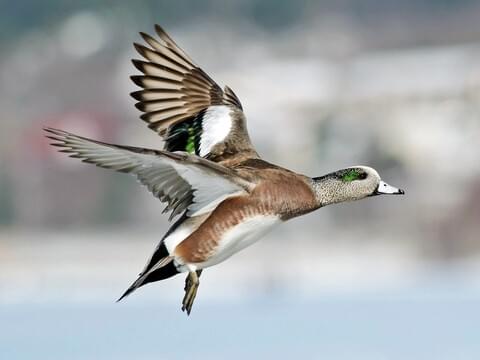
The American Wigeon is a round-headed, medium-sized duck often found grazing in fields or paddling in calm lakes. Its feet and legs are gray, sometimes appearing dark depending on the light, helping it blend in with muddy banks. The male is easy to spot with his white crown and green eye patch — a bright and bold look! Females are softer in color, with grayish-brown feathers and the same gray feet. These ducks feed on aquatic plants, sometimes even stealing food from other birds.
13. Cayuga Duck
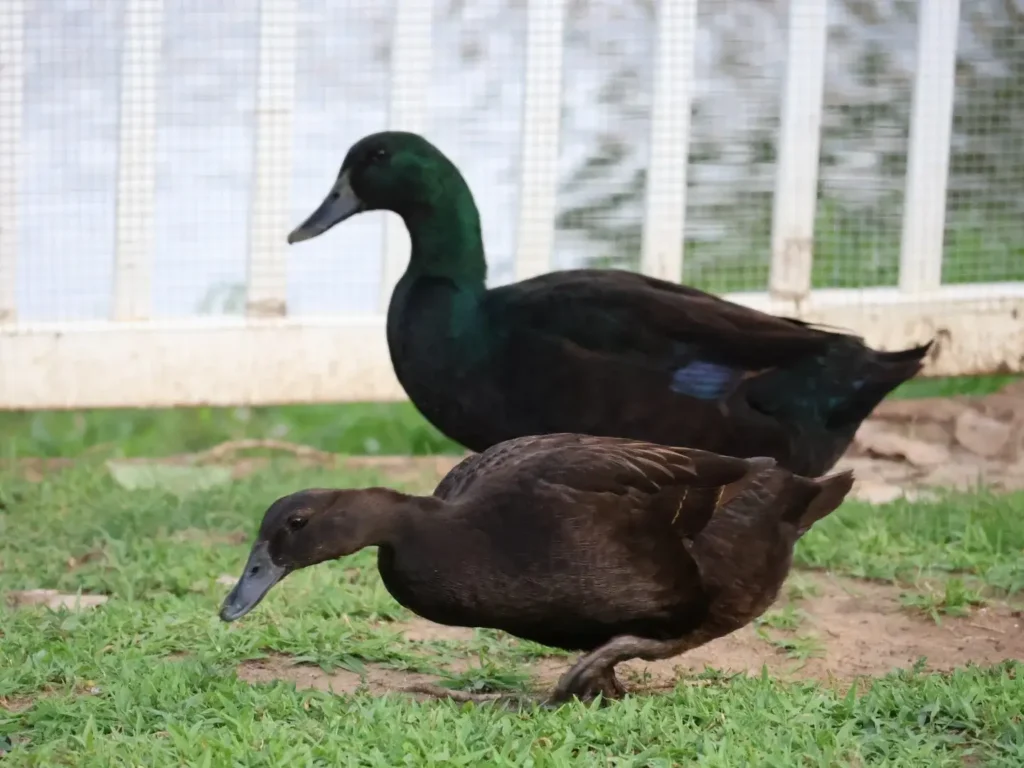
The Cayuga Duck is a stunning domestic breed known for its glossy black feathers that shine with green and purple in the sunlight. Its feet are also black, matching its dark plumage perfectly — a detail that helps you recognize it right away. Younger ducks may start with orange feet, but as they mature, the color deepens to a rich black. Cayugas are calm and hardy, often seen waddling around ponds or backyards.
14. Blue Duck
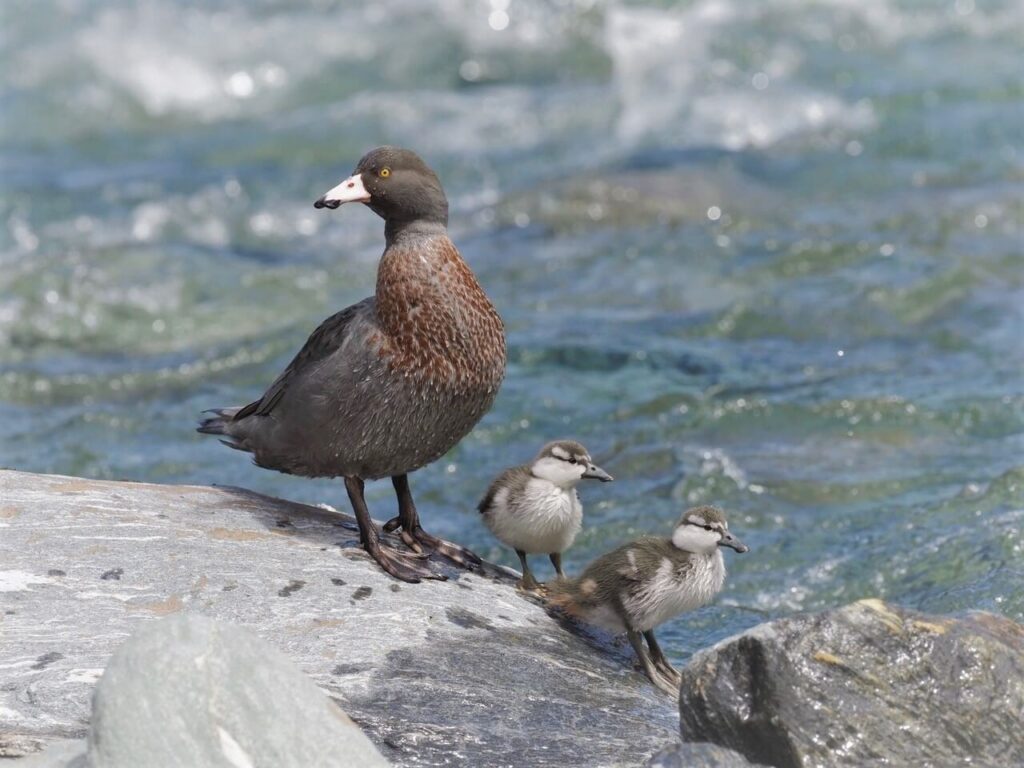
The Blue Duck, native to New Zealand, is a special sight for any birdwatcher. It has dark slate-blue feathers with chestnut touches on the chest and a soft green shimmer on the head. Its feet dark gray to black feet help it grip rocks in fast-moving rivers where it loves to feed. Unlike most ducks, it doesn’t waddle in ponds — it prefers cold mountain streams. Its sturdy black feet and webbing are perfect for swimming against strong currents, making it one of nature’s true river specialists.
15. Black East Indian Duck
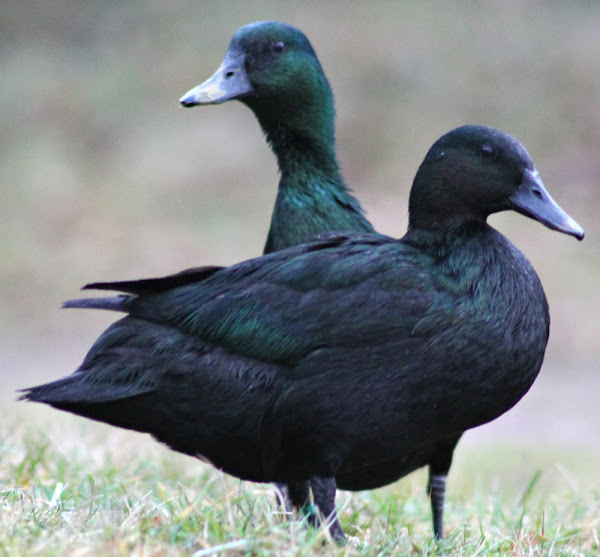
The Black East Indian Duck is small, elegant, and entirely dark — from its shimmering black feathers to its matching black feet and bill. In the sunlight, its plumage glows with hints of green and blue, giving it a jewel-like sheen. These ducks are often kept as ornamental birds, admired for their beauty and gentle temperament.
16. Pomeranian Duck
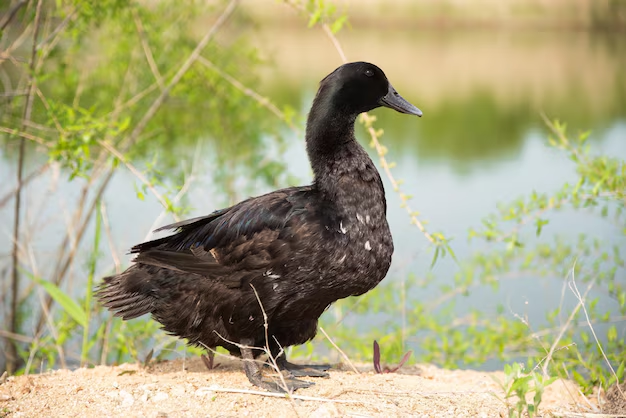
The Pomeranian Duck is a medium-sized breed from northern Europe, most often black or deep blue with a crisp white breast. Its bill and feet are dark, usually black, which contrast beautifully with its lighter chest. These ducks are strong swimmers and steady walkers — their dark feet making them blend easily into muddy waters or grassy banks.
17. Long-tailed Duck
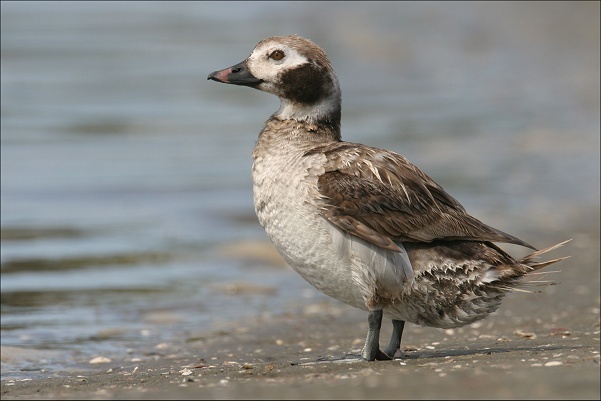
The Long-tailed Duck is a sea duck known for its elegant, slender tail feathers — especially in males. In winter, its plumage is mostly white with dark patches, while in summer, it turns browner. Its legs and feet are black, helping it paddle through icy northern seas. This duck dives deep under water to catch small shellfish and crustaceans, often disappearing completely below the surface. Those black feet act like strong paddles, built for life in the cold, choppy waves.
18. Hartlaub’s Duck
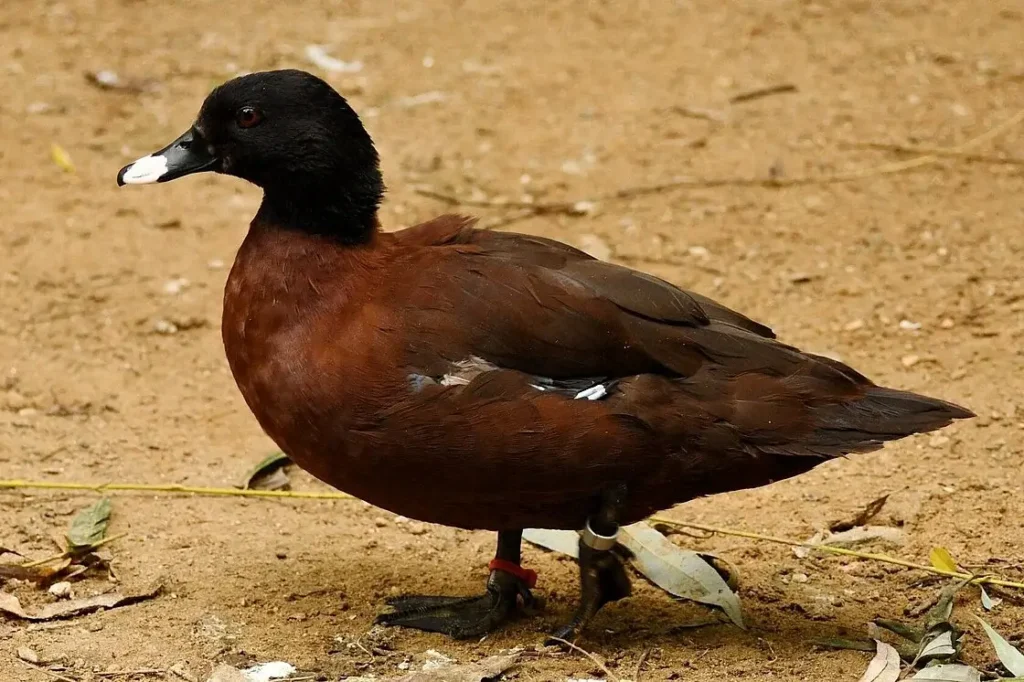
Hartlaub’s Duck is a unique African species with a beautiful mix of dark brown, chestnut, and white on its plumage. Males often have more white on their heads, while females are darker overall. Both have dark gray to black feet. They move quietly through shaded waters, using their dark coloring and feet to stay hidden from predators.
19. Maned Duck
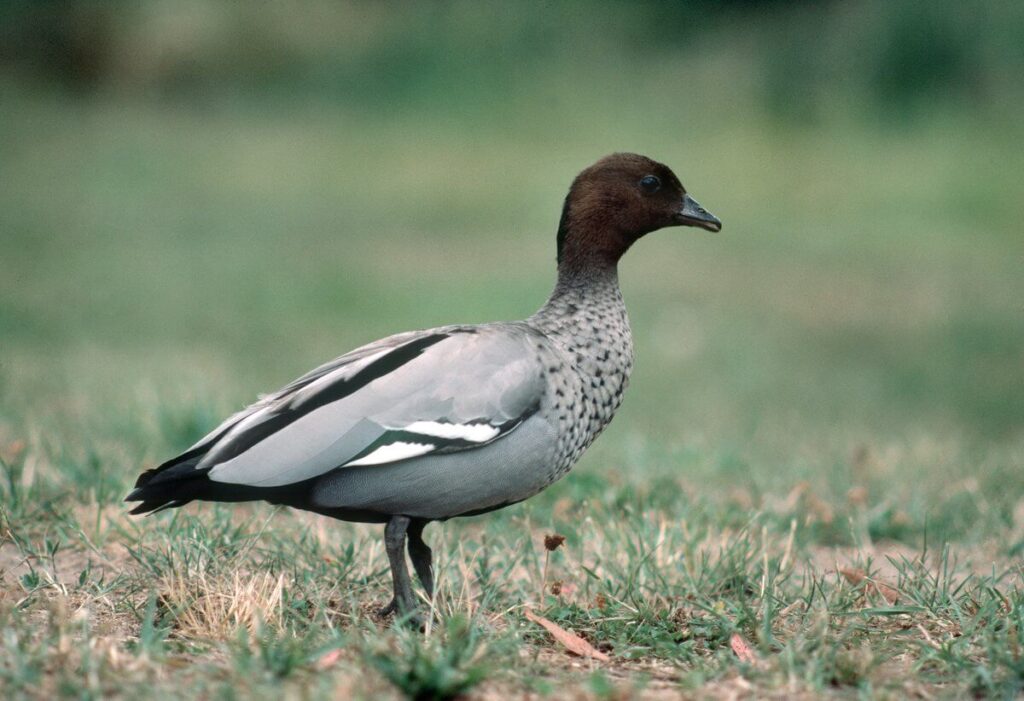
Also called the Australian Wood Duck, the Maned Duck is a graceful, upright bird often seen grazing on grass rather than dabbling in the water like most ducks. Both males and females have dark gray legs and black feet, which help them walk easily on land and perch on tree branches — something most ducks rarely do! The male has a chocolate-brown head and a soft gray body, while the female shows more patterns, with white eye stripes and spotted underparts. These ducks often nest in tree hollows and can be quite talkative, especially when perched high up.
20. Muscovy Duck
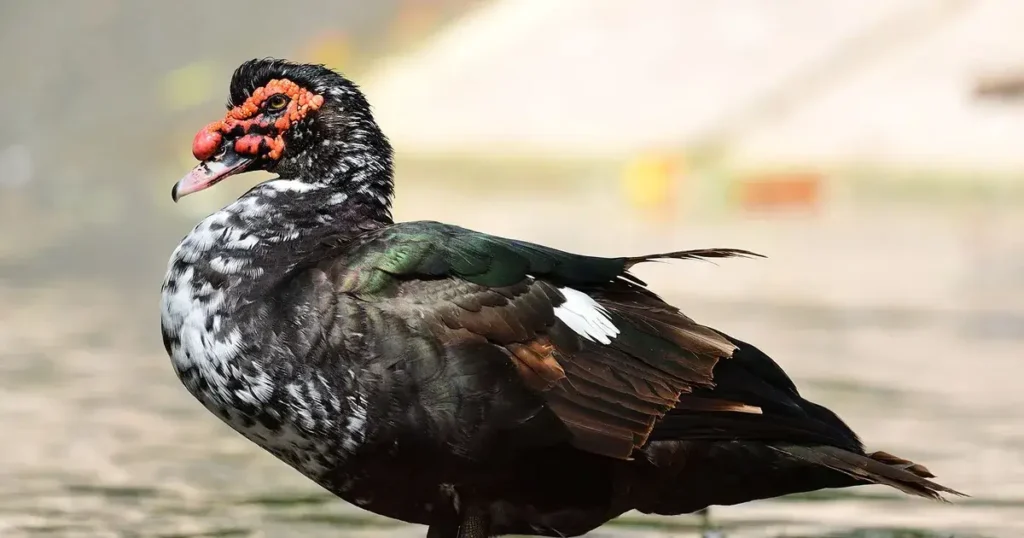
The Muscovy Duck is one of the most distinctive ducks you’ll ever see. Originating from Central and South America, it’s a large bird with broad wings, a flat tail, and red, bumpy skin around the face. Muscovy ducks actually show a range of foot colors—from blackish to pale orange, or even a mix such as black with yellowish webs. These variations can depend on the bird’s sex, plumage color, or individual traits. Wild Muscovy Ducks are mostly black with glossy green and purple reflections, while domestic ones can be white, black, or a blend of both. Their strong feet and sharp claws make them skilled perchers, often roosting in trees or walking confidently across varied terrain.
